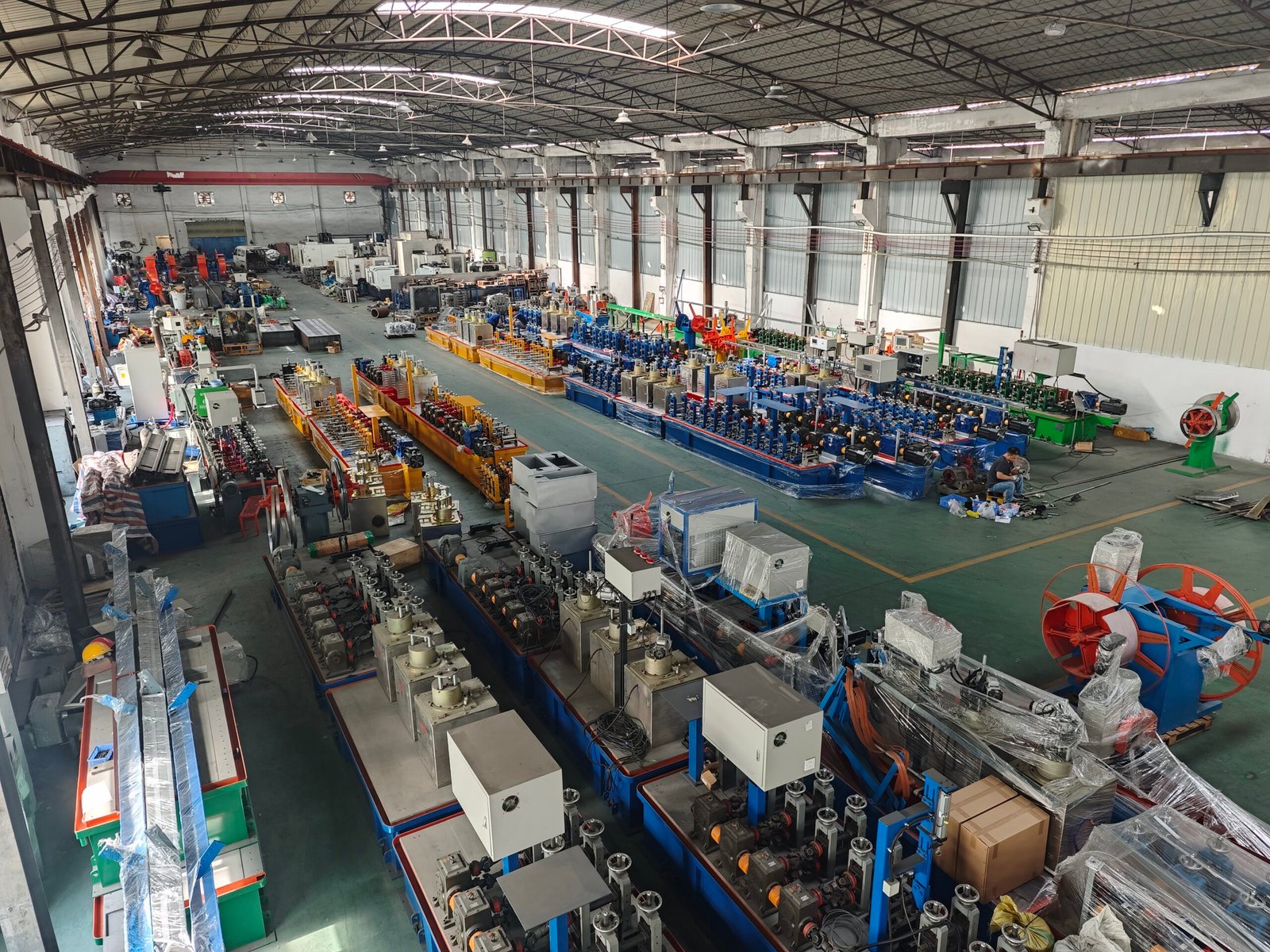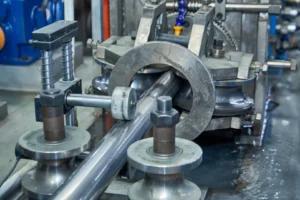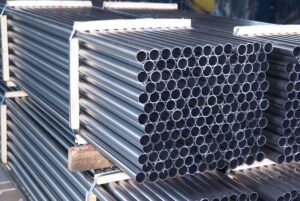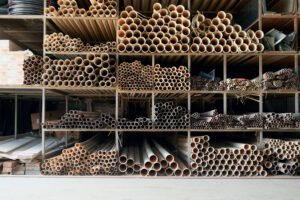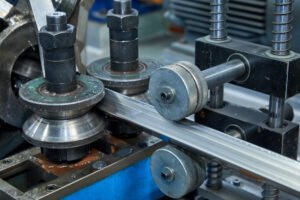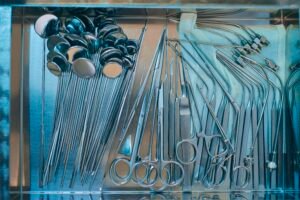Construction Industry Insights: Uses of Stainless Steel Pipe Machine in Infrastructure
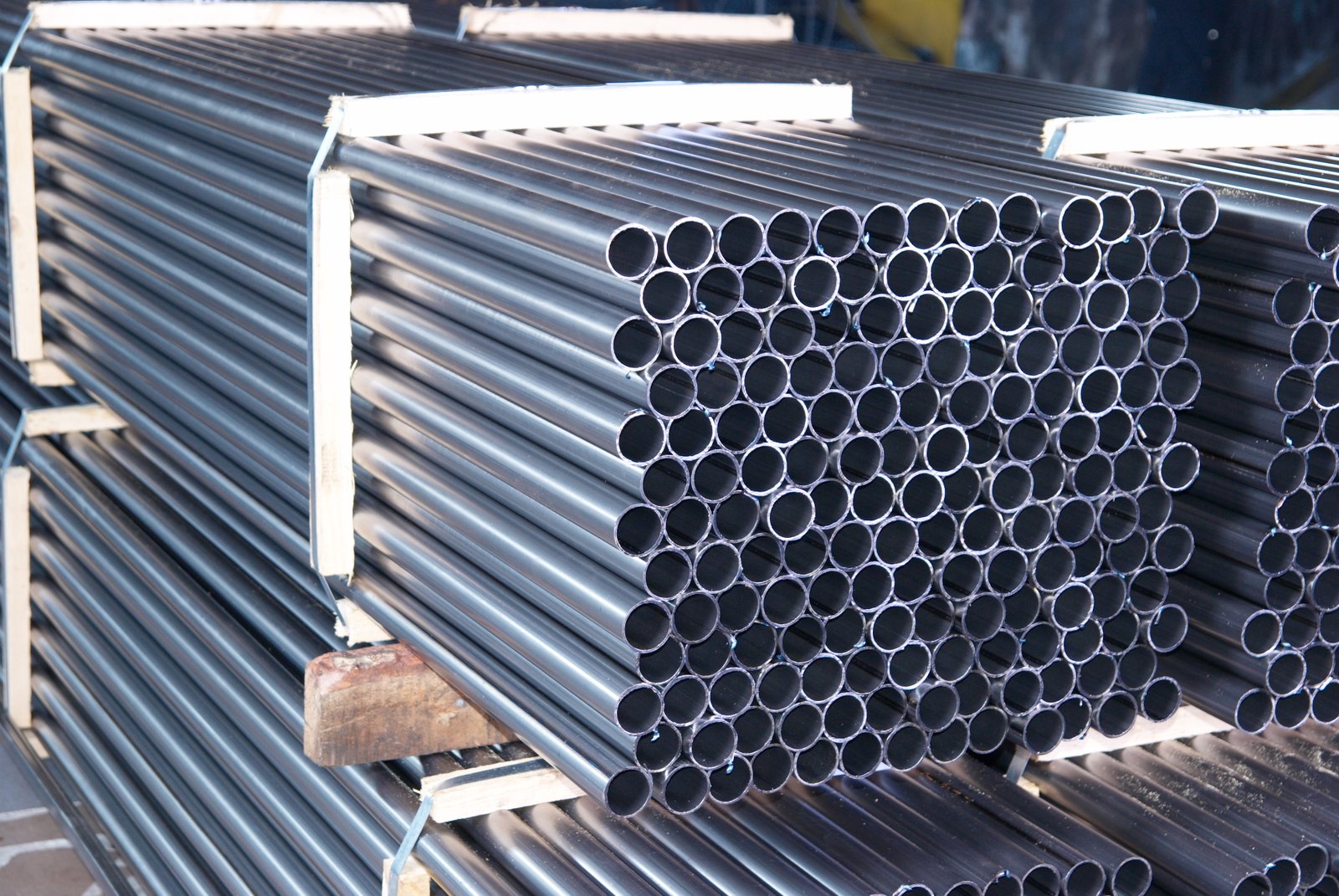
Are you struggling to source high-quality, corrosion-resistant pipes for your construction projects? This challenge often leads to delays, budget overruns, and concerns about the long-term integrity of your work. Owning a stainless steel pipe machine gives you direct control over your supply chain and product quality.
A stainless steel pipe machine is a critical asset in the construction industry, enabling the transformation of raw steel coils into finished pipes. These machines produce essential components for structural frameworks, plumbing and gas lines, and architectural elements, ensuring precision, durability, and corrosion resistance for modern infrastructure.
The demand for stainless steel in construction is not just a trend; it's a fundamental shift towards building more resilient and sustainable structures. As project specifications become more stringent and lifecycles are scrutinized more closely, the ability to produce your own high-grade piping is becoming a significant competitive advantage. This article will explore the multifaceted role of these machines, from the challenges of adoption to the technological advancements shaping their future.
I've spent over 15 years in this industry, and I've seen firsthand how vertical integration can transform a construction business. The conversation is moving beyond simply buying materials to strategically producing them. The initial investment in a machine is significant, but when you compare it to the long-term costs of sourcing, project delays, and potential quality issues, the return on investment becomes clear. A high-quality machine isn't just a piece of equipment; it's a foundational tool for building with confidence, ensuring that every component meets rigorous standards like ISO 9001 and delivers performance for decades to come.
What role does stainless steel pipe machine play in the construction industry?
Misunderstanding the core function of a pipe machine can lead to inefficient procurement and production strategies for your firm. This results in mismatched pipe specifications, project delays, and an over-reliance on third-party suppliers, ultimately eroding your profit margins and control over the final product.
A stainless steel pipe machine's primary role is to convert raw steel coils into precisely engineered pipes for diverse construction applications, including structural frames, plumbing, and cladding. It facilitates on-demand, in-house production, ensuring pipes meet specific project requirements for diameter, thickness, and material strength.
Viewing a stainless steel pipe machine merely as a piece of production equipment is a limited perspective. In today's competitive construction landscape, it represents a strategic asset that empowers a company to pivot from a passive buyer to a proactive producer. This transition is crucial. Think of the different demands across various projects: a high-rise building requires immense structural strength, a water treatment plant needs superior corrosion resistance, and a modern architectural facade demands aesthetic perfection. A third-party supplier might meet some of these needs, but they can rarely meet all of them with the speed, customization, and cost-effectiveness that in-house production allows. For instance, one of our clients, a large EPC contractor, was constantly battling supply chain inconsistencies for a major infrastructure project. By integrating one of our tube mill lines, they not only solved their supply issue but also discovered they could produce specialized piping for other local projects, opening up a new revenue stream. This is the strategic power we're talking about—it’s about taking control and building new capabilities.
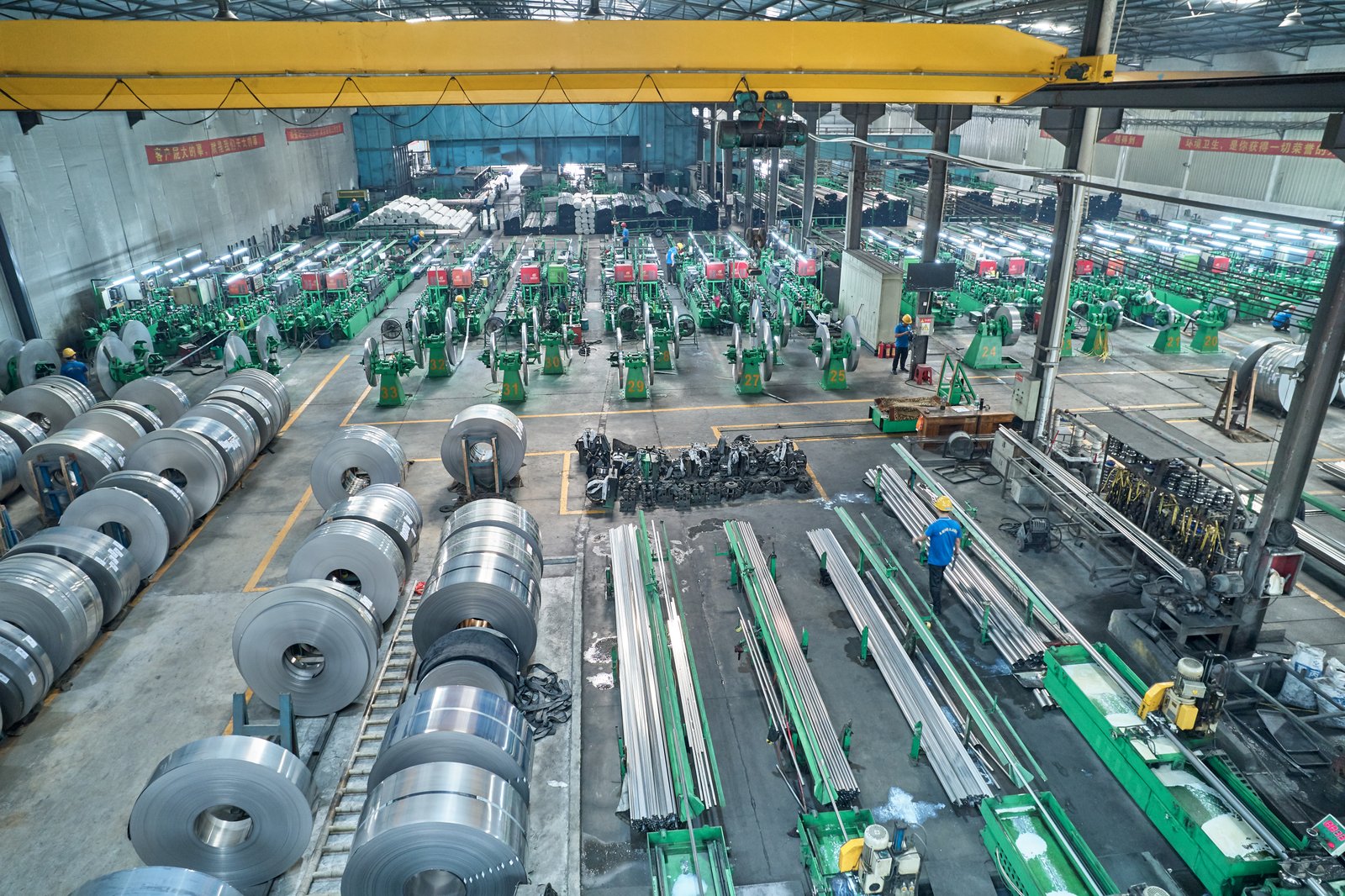
From Raw Material to Structural Integrity: The Core Function
The journey from a simple coil of stainless steel to a load-bearing structural component is a marvel of modern engineering, and the pipe machine is the heart of this process. It begins with the uncoiler, which feeds the flat steel strip into a series of forming rollers. Each subsequent roller station meticulously shapes the steel, gradually curling its edges upwards until they meet to form a round tube. This is where the high-frequency welder creates a strong, clean seam, fusing the edges without adding any foreign material. The pipe then passes through sizing and straightening sections to ensure it meets exact dimensional specifications before being cut to the desired length.
This process is defined by its precision. For structural applications, where components must fit together perfectly to ensure the stability of a building or bridge, tolerances are non-negotiable. Our machines are engineered to achieve a precision tolerance of ≤ ±0.05 mm. This level of accuracy, maintained consistently over thousands of meters of pipe, is what allows architects and engineers to design complex, reliable structures. The integrity of the final weld is just as critical, as it must withstand immense physical stress and environmental pressures throughout the structure's life.
I remember working with a building materials wholesaler in Brazil who was supplying a large-scale residential development. They faced a major challenge: the project's seismic standards required structural tubes with specifications that were not readily available from their usual suppliers. We helped them install one of our Heavy-Duty Tube Mills. This move allowed them to produce the exact tubes required, ensuring the project met its safety standards and deadlines. By taking production in-house, they not only solved a critical problem but also gained a significant competitive edge in a demanding market.
Enabling Architectural Freedom and Aesthetic Appeal
Beyond its structural role, stainless steel pipe is a cornerstone of modern architectural design. Its clean lines, durability, and resistance to weathering make it a preferred material for everything from curtain wall facades and support systems to handrails, canopies, and intricate decorative elements. The ability to create these components efficiently and with a high-quality finish depends entirely on the versatility of the pipe machine. A truly flexible machine isn't limited to one size or shape.
Our production lines, for example, feature quick-change tooling systems1 that allow fabricators to switch between producing round, square, or rectangular tubes with minimal downtime. This adaptability is essential for architectural metalworkers who may need to produce dozens of different profiles for a single project. Furthermore, the process can be integrated with downstream equipment, such as our Tube Polishing Machines, to achieve various finishes, from a brushed satin look to a mirror-like polish. This seamless integration ensures the final product meets the architect's precise aesthetic vision.
The global market for architectural stainless steel is expanding rapidly as designers seek materials that offer both longevity and beauty. A fabricator equipped with a versatile pipe machine and polishing line is perfectly positioned to capitalize on this trend. They can offer architects greater creative freedom, confident that they can produce the custom profiles and finishes needed to bring ambitious designs to life, whether for a corporate headquarters, a luxury hotel, or a public art installation.
Ensuring Safety and Longevity in Public Utilities
In the realm of public infrastructure, the stakes are incredibly high. The pipes used for water mains, gas distribution, and fire suppression systems are not just components; they are vital lifelines that protect public health and safety. Stainless steel is increasingly the material of choice for these critical applications due to its exceptional corrosion resistance, which prevents contamination and ensures a long, low-maintenance service life. A dedicated stainless steel pipe machine enables municipalities and contractors to produce piping that adheres to the most stringent safety and quality standards.
The strength of the weld seam is paramount in these systems. A leak in a high-pressure water main or a gas line can have catastrophic consequences. Our machines utilize energy-saving high-frequency welding technology, which creates a homogenous, incredibly strong weld bead that is stronger than the parent material itself. This ensures a leak-proof seal capable of withstanding high pressures and environmental stress for decades. This reliability is fundamental to building safe and resilient communities.
| Feature | Stainless Steel Pipe | Galvanized Steel Pipe | PVC Pipe |
|---|---|---|---|
| Average Lifespan | 50+ years | 20-50 years | 25-40 years |
| Corrosion Resistance | Excellent | Good (coating can fail) | Excellent (chemical limits) |
| Initial Cost | High | Medium | Low |
| Maintenance Cost | Very Low | Medium (coating repair) | Low |
| Pressure Rating | Very High | High | Low to Medium |
As the table illustrates, while the initial cost of stainless steel is higher, its superior lifespan and low maintenance requirements make it the most cost-effective choice over the lifecycle of a project. By producing these pipes in-house, construction companies and public works departments can control quality rigorously, ensuring every pipe installed meets or exceeds critical safety protocols like the AWWA standards in the United States.
Stainless steel pipes resist corrosionTrue
Stainless steel's chromium content forms a passive oxide layer that prevents rusting, making it ideal for construction applications exposed to moisture.
PVC pipes last longer than stainlessFalse
The table shows stainless steel pipes have a 50+ year lifespan versus PVC's 25-40 years, with superior pressure resistance and no degradation from UV exposure.
How is the current infrastructure sector utilizing stainless steel pipe machines?
The global infrastructure sector is undergoing a massive transformation, yet many firms remain tied to traditional materials and outdated sourcing methods. This reliance can lead to higher lifecycle maintenance costs and shorter operational lifespans for critical assets like bridges, tunnels, and water systems.
The infrastructure sector uses stainless steel pipe machines for high-strength tubing for bridge superstructures, water treatment facilities, transportation hubs, and energy pipelines. This on-demand production capability is essential for meeting the stringent longevity and safety requirements of modern public works projects.
This adoption isn't just about replacing one material with another; it's a strategic shift driven by a growing emphasis on lifecycle costing and asset resilience. Governments and private developers are no longer looking at just the upfront construction cost. They are analyzing the total cost of ownership over 50 or even 100 years. In this analysis, stainless steel consistently comes out ahead due to its minimal maintenance needs and exceptional durability, especially in harsh environments. A stainless steel pipe machine makes the economics even more compelling. By producing pipes in-house, an infrastructure contractor can slash procurement costs, customize dimensions for specific applications, and ensure a steady supply chain, insulating projects from market volatility2. This capability is transforming how we approach the construction of everything from our water systems to our transportation networks, building a future that is not only stronger but also more economically sustainable.

Modernizing Water and Wastewater Management
The global challenge of aging water infrastructure is well-documented, with problems ranging from significant water loss due to leaks to concerns about water quality from corroding pipes. Stainless steel pipe machines are at the forefront of addressing this crisis. By enabling the production of seamless, corrosion-proof piping, these machines provide the core components for a new generation of water and wastewater systems that are both safe and efficient. The smooth interior surface of polished stainless steel pipe also resists biofilm formation, further enhancing water quality.
I had the privilege of working with an EPC contractor in India tasked with upgrading a major municipal water treatment plant. They were replacing a century-old cast iron system that was plagued with leaks and corrosion. By investing in one of our Large Diameter Tube Mills, they were able to produce the large-bore 316L stainless steel pipes needed for the primary water transport lines directly on-site. The precision of the pipes ensured perfect fits and weld integrity, and the project's engineers projected a staggering 15% reduction in non-revenue water loss compared to the old system.
This is a prime example of how technology directly impacts public welfare and resource conservation. Furthermore, our machines are designed for extremely high material utilization, reaching up to 98%. In a large-scale public works project where tons of material are used, minimizing scrap and waste is not just an environmental benefit but also a significant cost-saving measure that makes the entire project more viable for taxpayers. This efficiency helps contractors meet stringent public procurement requirements while delivering a superior, long-lasting solution.
Enhancing Durability in Transportation Infrastructure
Transportation infrastructure—bridges, tunnels, airports, and railway stations—is constantly exposed to heavy loads, vibrations, and corrosive agents like de-icing salts and coastal air. Here, the use of stainless steel produced by dedicated pipe machines is a game-changer for longevity. Applications are diverse, ranging from structural support members and bridge drainage systems to tunnel ventilation ducts, cable conduits, and architectural elements in passenger terminals. The goal is to build structures that can withstand these demanding conditions for a century or more with minimal intervention.
A comprehensive study by the industry on the lifecycle costs of using stainless steel rebar in bridge decks found that despite a higher initial cost, it was vastly more economical than carbon steel over a 75-year lifespan due to the elimination of costly corrosion-related repairs. The same principle applies directly to stainless steel pipes used as structural or conveyance elements. The robust, CNC-machined frames of our tube mills are built for the kind of long, continuous production runs required for these massive projects, ensuring that every pipe, from the first to the last, maintains the same high quality and precise dimensions.
Consider the handrails and safety barriers on a coastal bridge. Using stainless steel pipes produced in-house ensures the material grade (e.g., Duplex or 316L) is perfectly suited for the marine environment, preventing the rust and degradation that plagues lesser materials. This isn't just an aesthetic issue; it's a critical matter of public safety. For a project integrator, having a pipe machine means they can promise—and deliver—a level of durability that sets their bid apart from the competition.
Supporting the Energy Transition with Robust Pipelines
The global energy sector is in transition, with a dual need to maintain and upgrade existing oil and gas infrastructure while building out new systems for renewable energy like geothermal, solar thermal, and hydrogen. Stainless steel pipe machines are versatile assets that can cater to the demands of both. The material's ability to handle high pressures, extreme temperatures, and corrosive fluids makes it indispensable across the energy spectrum.
In traditional oil and gas, stainless steel pipes are used for process piping, handling sour gas and other corrosive substances. In the renewable sector, they are crucial for geothermal plants, where they transport highly corrosive hot brines, and are being explored for the safe transportation of hydrogen, which can cause embrittlement in conventional steel pipes. The flexibility of a modern pipe machine, with its quick-change tooling and ability to handle a wide range of steel grades, allows a single producer to serve these varied market needs effectively.
| Energy Application | Recommended Material | Key Requirement | Our Machine Solution |
|---|---|---|---|
| Natural Gas Distribution | Stainless Steel 304/304L | Good corrosion resistance, weldability | Industrial Precision Tube Mill |
| Geothermal Brine Transport | Duplex Stainless Steel | High strength, chloride resistance | Heavy-Duty Tube Mill |
| Hydrogen Pipeline | Austenitic Stainless Steel (e.g., 316L) | Resistance to hydrogen embrittlement | HF Carbon Steel Pipe Welding Line (adapted) |
| HVAC / Heat Exchanger | Stainless Steel 400 Series / 304 | Thermal conductivity, formability | Stainless Steel Precision Tube Mill Line |
As the table shows, different applications require different material properties and pipe specifications. A construction company or contractor with an in-house pipe production line can quickly adapt to project requirements, whether it's for a district heating system using solar thermal energy or a critical pipeline in a refinery. This agility is a powerful advantage in the fast-evolving energy landscape.
Stainless steel resists corrosionTrue
Stainless steel's chromium content forms a passive layer that prevents rust, making it ideal for harsh environments like coastal bridges or chemical plants.
Carbon steel outperforms stainlessFalse
While carbon steel has lower upfront costs, stainless steel's lifecycle durability and minimal maintenance make it more economical long-term for infrastructure.
What challenges do construction companies face when using stainless steel pipe machines?
Embarking on the journey of in-house pipe production by acquiring a stainless steel pipe machine can feel like a monumental leap, filled with daunting technical and financial questions. This apprehension about the high initial investment, the need for skilled operators, and maintenance complexities can paralyze decision-making.
Key challenges for construction companies include the substantial initial capital outlay for the pipe production machine, the necessity for specialized operator training and a technical skills gap, and developing protocols for ongoing preventive maintenance. Integrating the new production line into existing workflows without disrupting project timelines is also a significant hurdle.
These concerns are entirely valid and should be addressed with a clear-eyed strategy, not dismissed. However, I encourage you to view them not as insurmountable barriers, but as a series of manageable steps on the path to greater efficiency and profitability. The critical factor in navigating this path is choosing the right partner. The relationship with your pipe machine supplier3 should not be a simple, one-time transaction. It must be a long-term partnership focused on your success. This involves collaborative planning before the purchase, comprehensive training during installation, and responsive support for years after. A good partner understands that their success is intrinsically linked to yours. They won’t just sell you a machine; they will provide a complete solution designed to overcome these very challenges, ensuring your investment generates returns for years to come. From my experience at XZS, the clients who succeed are the ones who engage with us early and treat us as part of their team from day one.
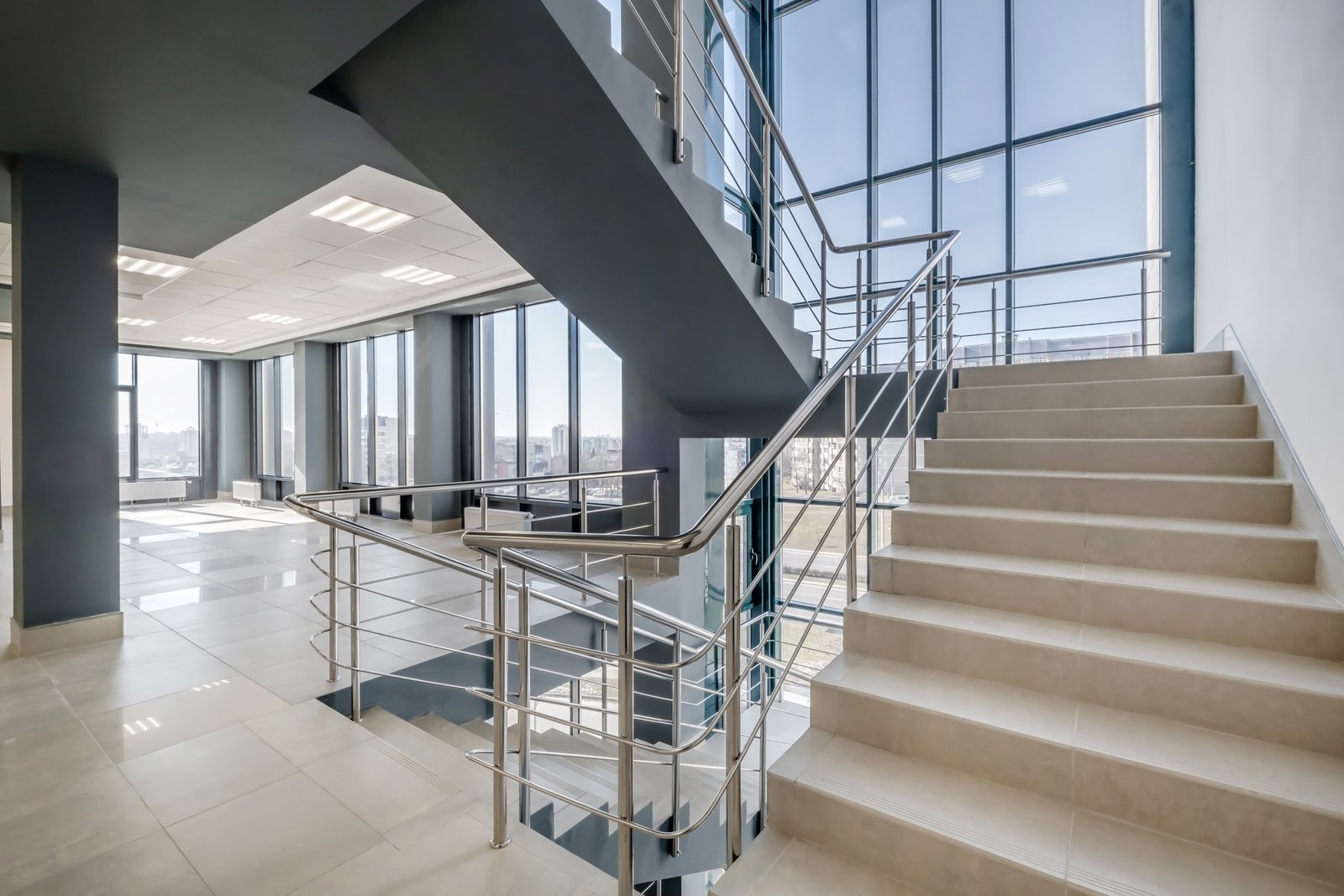
The Financial Hurdle: Initial Investment and ROI Calculation
The most significant and immediate challenge for any construction company considering a pipe machine investment4 is the capital investment. The price tag for a high-quality production line can seem intimidating. The costs extend beyond the machine itself to include transportation, installation, commissioning, specialized tooling for different pipe sizes, and potential modifications to your facility to accommodate the line's footprint and power requirements. It's a comprehensive financial commitment that requires careful planning and justification.
However, the analysis must not stop at the initial expense. A thorough Return on Investment (ROI) calculation reveals the true financial picture. On the savings side, you must quantify the elimination of your supplier's profit margin on every meter of pipe, the reduction in transportation costs for finished goods, and the ability to minimize inventory by producing on a just-in-time basis. On the revenue side, consider the potential to sell excess pipe production to other local contractors. Furthermore, factor in efficiency gains, such as the increased output from our machines' up to 98% material utilization, which directly reduces raw material waste—a significant cost center.
I worked closely with a sanitary-ware fabricator in Southeast Asia who was hesitant about the cost of our Industrial Precision Tube Mill. Their business was at the mercy of volatile spot prices for stainless steel tubing. We sat down with their finance team and built a detailed business case. We mapped out their current annual expenditure on finished tubes versus the total cost of owning and operating our line. The numbers were compelling: the analysis showed they would achieve a full return on their investment in just 22 months, simply by eliminating their reliance on external suppliers and market price fluctuations.
The Skills Gap: Operator Training and Technical Expertise
A state-of-the-art pipe machine is only as effective as the team that operates and maintains it. The second major challenge is bridging the skills gap. Operating a tube mill requires a specific set of technical skills: understanding the forming and welding process, proficiency with PLC controls, the ability to perform tooling changeovers quickly and accurately, recognizing the signs of potential weld defects, and conducting routine maintenance. Many construction firms may not have this expertise in-house initially.
This is where the concept of a true partnership with the manufacturer becomes critical. A responsible manufacturer's role extends far beyond simply delivering the machine. At XZS, we consider training to be an integral part of the product. We provide comprehensive, hands-on training programs, both at our 20,000 m² smart factory in China, where trainees can see dozens of machines in action, and on-site at the client's facility during commissioning. This ensures your team is confident and competent from the very first day of operation.
Thankfully, technology has also made these machines more accessible. Modern lines are equipped with intuitive PLC and touch-screen control systems that automate many of the complex parameter settings. An operator can often select a pre-programmed recipe for a specific pipe diameter and wall thickness, and the machine will adjust speeds, power, and other variables automatically. This user-friendly interface significantly shortens the learning curve and reduces the likelihood of human error compared to the manually-intensive machines of the past.
Operational Integration and Maintenance
The third challenge lies in the practicalities of integrating a full production line into an existing facility and establishing a robust maintenance protocol. A tube mill requires a significant amount of linear space, along with specific power and, in some cases, water-cooling infrastructure. Careful logistical planning is needed to ensure a smooth workflow, from the storage of raw material coils at the entry point to the handling and storage of finished pipes at the exit. Disrupting existing operations during installation is a key concern that must be managed.
Once operational, the focus shifts to maintenance. Unplanned downtime is the enemy of profitability. A proactive, preventive maintenance schedule is essential to ensure the machine runs reliably for years. This isn't overly complex but requires discipline. It involves daily checks of rollers and coolant levels, weekly inspections of welding components, and more in-depth monthly and annual servicing. A reliable manufacturer will provide a detailed schedule and checklist.
| Maintenance Frequency | Key Tasks | Purpose |
|---|---|---|
| Daily | Clean rollers and guides. Check welding coolant levels. Visually inspect weld seam. | Prevent material buildup, ensure proper cooling, early defect detection. |
| Weekly | Grease key bearings. Inspect welding impeder and coil. Check cutting blade for wear. | Ensure smooth operation, optimize weld quality, maintain cut accuracy. |
| Monthly | Calibrate sizing and straightening sections. Inspect gearbox oil levels. | Maintain dimensional accuracy, prevent mechanical wear. |
| Annually | Full electrical inspection. Major component review by a certified technician. | Ensure long-term safety and reliability, identify potential major failures. |
Furthermore, the physical construction of the machine plays a huge role in its long-term reliability. Our insistence on using robust, CNC-machined frames, rather than cheaper welded structures, ensures the machine maintains its alignment and precision over a long service life, reducing the need for constant adjustments. This commitment to quality, backed by our ISO 9001 certification and a global after-sales service network, provides our clients with the peace of mind that support is always available to minimize downtime and protect their investment.
Initial investment is the biggest challengeTrue
The article clearly states that the capital investment for the machine and related costs is the most significant immediate challenge for construction companies.
Modern machines require no trainingFalse
While modern machines have user-friendly interfaces, the article emphasizes that operator training remains crucial for effective operation and maintenance.
What strategies can be employed to overcome these challenges in infrastructure projects?
The challenges of integrating a stainless steel pipe mill5—financial, technical, and operational—can seem formidable, potentially stalling your strategic move towards in-house production. Without a clear and actionable plan, you risk a failed investment, with expensive machinery sitting underutilized and the promised ROI never materializing.
Effective strategies include partnering with a manufacturer for a comprehensive turnkey solution that includes training and after-sales support, adopting a phased implementation to manage capital outlay, leveraging modular machine designs for future scalability, and developing a resilient supply chain for raw materials through strategic sourcing.
The key to transforming these challenges into stepping stones for success is proactivity. Instead of reacting to problems as they arise, the goal is to anticipate them and build a robust framework from the outset. This is where the concept of a "turnkey solution" becomes the central, unifying strategy. It's an approach that moves beyond simply purchasing a machine and instead focuses on acquiring a complete, integrated production capability. A true turnkey partner works with you to plan the facility layout, customize the machine to your specific needs, train your staff until they are experts, and provide ongoing support to ensure you maximize your asset's potential. This holistic approach de-risks the entire endeavor. It converts the daunting list of challenges into a structured, manageable project plan, with an experienced partner guiding you at every stage.
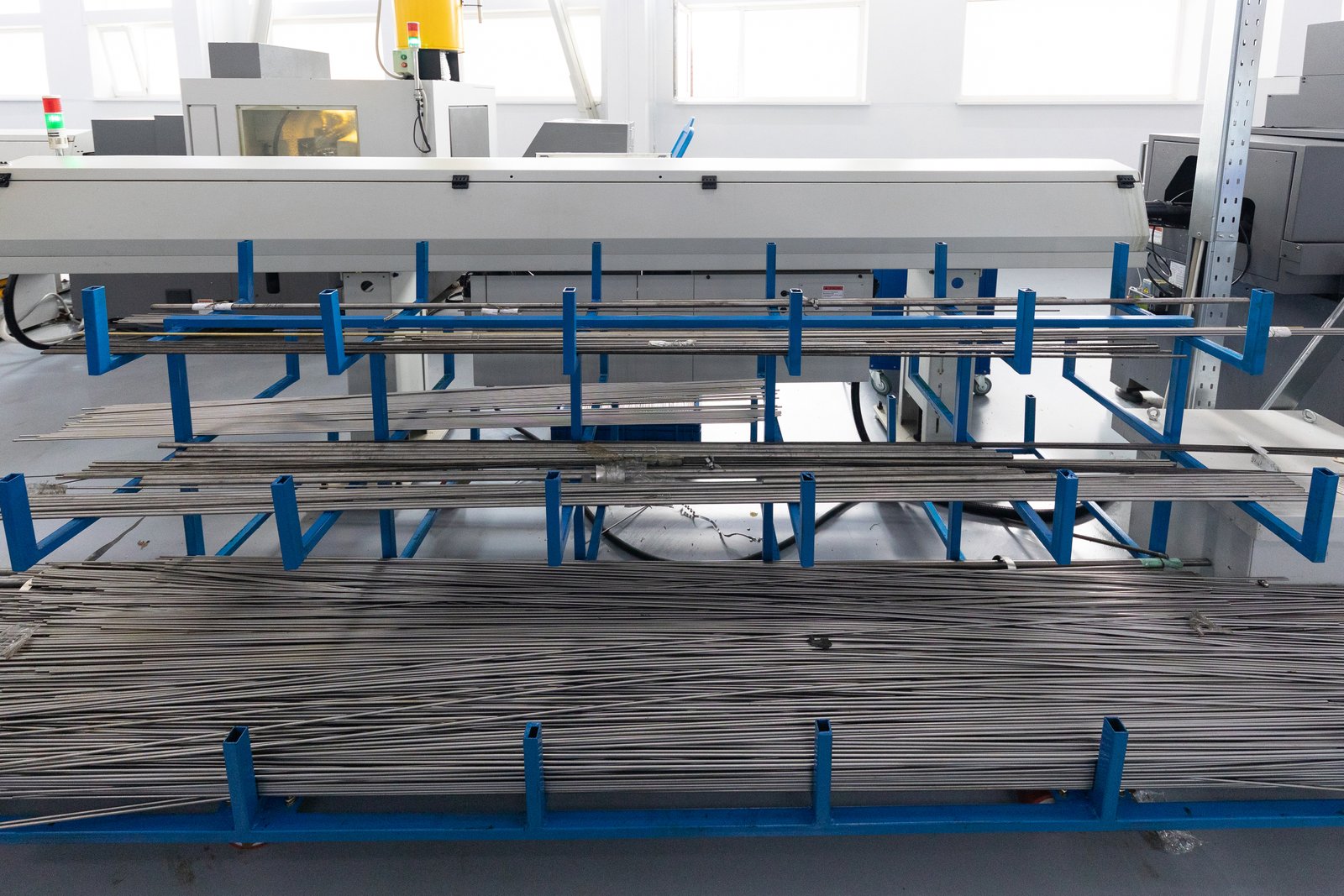
The Turnkey Solution: Your Strategic Partnership for Success
The single most effective strategy to overcome the array of challenges is to engage with a manufacturer that offers a genuine turnkey solution. This term is often used, but its true meaning goes far beyond simply delivering and installing a machine. A comprehensive turnkey partnership, like the one we practice at XZS, integrates every phase of the process: collaborative R&D to understand your unique needs, custom design of the production line, meticulous manufacturing under ISO 9001 standards, transparent sales and logistics, and a deep commitment to after-sales service. It can even include OEM/ODM customization6 if you have a unique product vision.
When a potential client, such as an automotive exhaust manufacturer from the United States, approaches us, our first step isn't to send a price list. Our first step is to listen. We ask about the specific alloys they use, the precision tolerances they require for robotic welding, and the production volumes they need to meet. We might use our advanced simulation labs to model their production process and identify potential bottlenecks before a single piece of metal is cut. This collaborative, engineering-led approach ensures the solution is perfectly tailored to their goals.
This partnership model fundamentally de-risks the investment. By choosing a partner with a proven track record across global markets—from Brazil to India and across Europe—you are leveraging a wealth of experience. The manufacturer becomes a stakeholder in your success, motivated to provide the training, support, and expertise needed to ensure your new production line becomes a profitable centerpiece of your operation, not a source of frustration.
Phased Adoption and Modular Design for Scalability
You don't have to build your entire dream factory overnight. A highly effective strategy for managing the initial financial and operational burden is a phased adoption approach. This "crawl, walk, run" methodology allows your company to grow into its new capabilities organically. You can begin by investing in a single, versatile production line that addresses your most immediate and high-volume need. For many, this might be one of our Industrial Precision Tube Mills7, capable of handling the most common sizes for structural or decorative applications.
Once this initial line is running efficiently, your team has mastered its operation, and the ROI is beginning to materialize, you can move to the next phase. This could involve adding complementary equipment, like a Tube Polishing Machine to offer new finishes and tap into architectural markets. Later, as your business grows or you win contracts for larger infrastructure projects, you might add a Large Diameter Tube Mill or a Heavy-Duty Tube Mill to expand your product range. This modular approach aligns capital expenditure with revenue growth, making the entire expansion self-funding over time.
A construction conglomerate we work with in the Middle East provides a perfect case study. They began with a single XZS line to produce decorative stainless steel tubing for a massive hotel project. The success of this venture gave them the confidence and capital to expand. Two years later, they commissioned a second, heavy-duty line from us to manufacture structural components for a new airport terminal they were building. This phased strategy allowed them to enter the production market with minimal risk and scale their operations as their ambition grew.
Building a Resilient Supply Chain and Workforce
Your pipe machine is one half of the production equation; the other half is a steady supply of high-quality raw materials and a well-trained workforce. A crucial strategy is to proactively develop a resilient supply chain for your stainless steel coils. This means not being reliant on a single supplier or region. It involves researching and building relationships with multiple steel mills, both domestic and international, to ensure competitive pricing and continuity of supply.
| Sourcing Option | Pros | Cons |
|---|---|---|
| Local/Domestic Sourcing | Shorter lead times, lower shipping costs, easier communication. | Potentially higher cost, limited grade availability, less competition. |
| International Sourcing | Lower cost, wider selection of grades/quality, access to global market innovations. | Longer lead times, complex logistics & customs, potential for currency/geopolitical risk. |
A blended sourcing strategy often provides the best balance of cost, quality, and security. On the human resource side, workforce development must be an ongoing commitment, not a one-time event. Beyond the initial training provided by the machine manufacturer, invest in your people. This could involve creating an in-house certification program or sending your lead operators and maintenance staff to major international trade fairs like Tube & Wire in Düsseldorf8 or FABTECH in the US. Exposing them to the latest global trends and technologies fosters a culture of excellence and innovation within your team, ensuring you get the most out of your machinery for years to come.
Turnkey solutions include trainingTrue
A genuine turnkey solution encompasses staff training as part of the comprehensive package to ensure operational success.
Phased adoption increases riskFalse
Phased implementation actually reduces risk by allowing gradual capital investment and operational mastery.
How can technological advancements enhance the efficiency of stainless steel pipe machines in construction?
Your current pipe production methods might be reliable, but in a competitive market, are they as efficient as they could be? Competitors who are embracing new technology are producing pipes faster, with less waste and higher precision, which could quietly be putting your profitability and market position at risk.
Technological advancements dramatically boost efficiency through fully automated PLC controls and quick-change tooling systems to minimize downtime, and energy-saving high-frequency welding to cut operational costs. Integrated sensors for quality monitoring and predictive maintenance further enhance precision and reduce waste.
This isn't science fiction; this is the reality of the "smart" tube mill, a key component of the Industry 4.0 revolution in manufacturing. The goal of these advancements isn't to replace skilled operators but to empower them. By automating the repetitive, time-consuming tasks, technology frees up your team to focus on higher-value activities like process optimization, quality assurance, and proactive problem-solving. Imagine your best operator overseeing three highly automated lines instead of manually wrestling with one. This synergy between human expertise and machine intelligence is where the next level of productivity is unlocked. It transforms the production floor from a place of manual labor into a data-rich environment where informed decisions can be made in real-time to improve output, quality, and your bottom line.
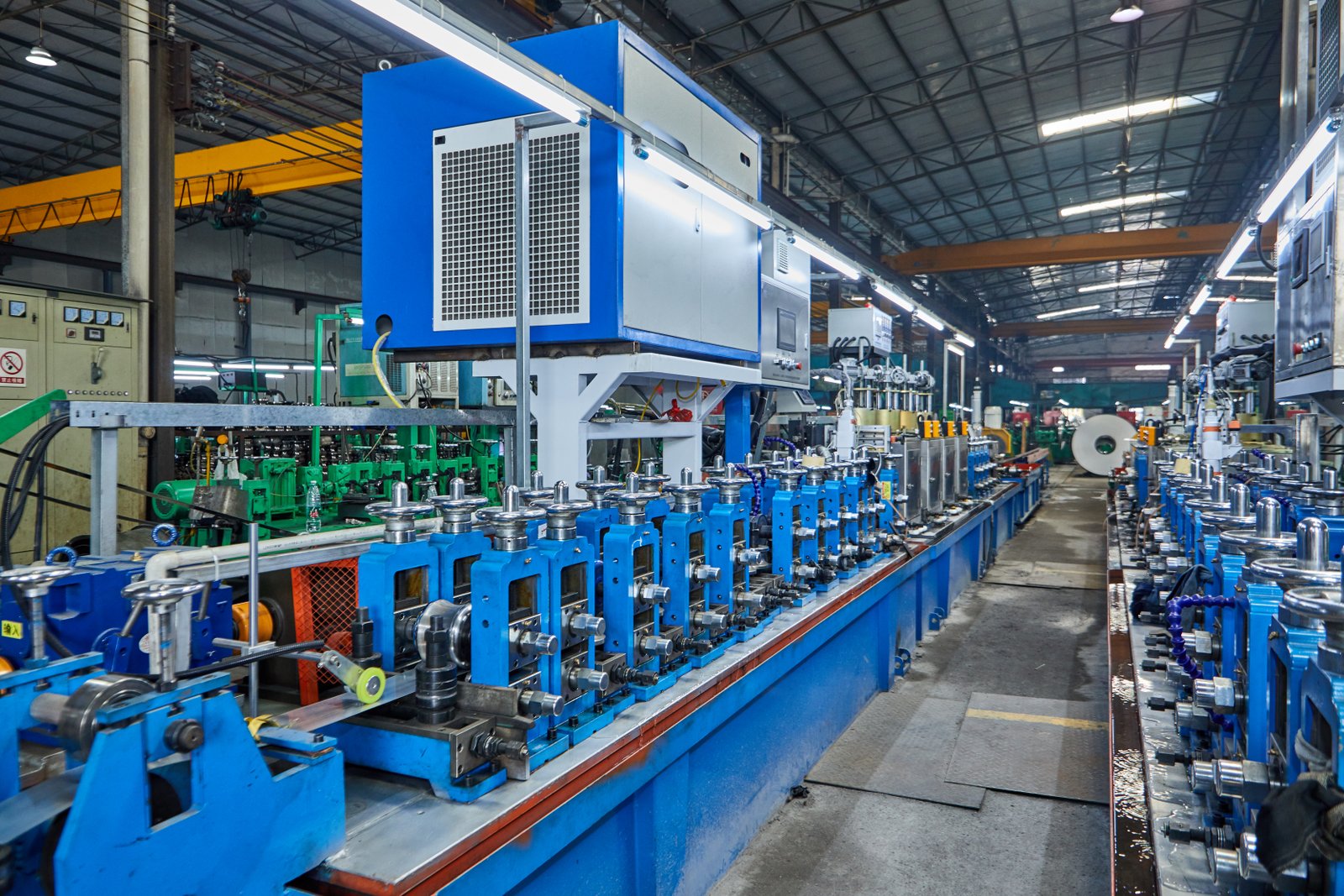
The Power of Automation: PLC and Touch-Screen Control
The single greatest leap in pipe machine efficiency has come from the shift away from manual, dial-based controls to fully automated systems managed by a Programmable Logic Controller (PLC) and an intuitive touch-screen interface. In older systems, changing from one pipe size to another was a laborious, time-consuming process involving manual adjustments of dozens of rollers and settings, relying heavily on the operator's tribal knowledge and trial-and-error. Today's technology changes everything.
With a modern PLC-controlled system, an operator can simply select the desired pipe specifications from a pre-programmed menu on a touch-screen. The PLC then automatically adjusts the machine's parameters—motor speeds, welder power, cutting length, and more—to the optimal settings for that specific job. The system provides a one-button start and offers real-time monitoring of all critical variables. This level of automation drastically reduces the chance of human error, ensures consistency from the first meter of pipe to the last, and slashes changeover times.
I vividly recall a client in the automotive industry in the United States who manufactured performance exhaust systems. They upgraded from an older, manually controlled mill to one of our new lines with full PLC automation. Their average setup time to switch between different pipe diameters and wall thicknesses plummeted from over four hours to less than 45 minutes. For a high-mix, low-volume manufacturer like them, this unlocked dozens of hours of productive uptime each month. That is a direct, measurable, and transformative impact on efficiency.
Innovations in Welding and Material Utilization
The heart of any pipe mill is its welding station, and advancements here have a profound impact on both quality and operational cost. The integrity of the weld seam is critical for every application, from high-pressure pipelines to architecturally exposed structures. We have moved beyond basic welding to implement technologies like energy-saving, solid-state high-frequency welding. This technology not only creates a stronger, more consistent, and cleaner weld seam but does so with remarkable efficiency.
Compared to older vacuum tube welder technologies, a modern solid-state welder can reduce electricity consumption by as much as 30%. In a facility running 24/7, this translates into substantial annual savings on energy bills, making the operation more profitable and environmentally sustainable. But efficiency isn't just about power consumption. It's also about how much of your expensive raw material—the stainless steel coil—is converted into a sellable product.
Through decades of refining our machine designs, from the forming process to the cutting system, we have pushed material utilization rates to as high as 98%. For context, many conventional machines on the market struggle to get above 80-85%. This means that with our technology, for every 100 tons of steel you purchase, you get up to 98 tons of finished pipe. This represents a nearly 20% higher output from the same amount of raw material, a direct and powerful boost to your bottom line.
The Future: Smart Factories and Predictive Maintenance
The next frontier for efficiency lies in data and connectivity, transforming the pipe mill into a smart, self-aware component of a connected factory. This involves embedding a network of sensors throughout the machine to monitor not just the production process but also the health of the machine's own components. This data can be used to implement a predictive maintenance strategy, a significant evolution from reactive or even preventive approaches.
Instead of waiting for a bearing to fail and cause a costly shutdown (reactive maintenance), or replacing it on a fixed schedule whether it needs it or not (preventive maintenance), sensors can monitor vibrations and temperature in real-time. The system can then analyze this data and predict that the bearing will likely fail within the next 100 operating hours, automatically alerting the maintenance team and even ordering the replacement part. This allows maintenance to be scheduled during planned downtime, maximizing uptime and operational efficiency.
| Maintenance Strategy | Approach | Cost | Downtime |
|---|---|---|---|
| Reactive | Fix it when it breaks. | Very High | Unplanned & High |
| Preventive | Service at fixed intervals. | Medium | Planned & Low |
| Predictive | Service when data indicates a need. | Low | Planned & Minimized |
This flow of data doesn't have to stop at the machine itself. Production data from the tube mill—meters produced, scrap rate, energy consumed per meter—can be fed directly into a company's Enterprise Resource Planning (ERP) system. This gives management a live, transparent view of production costs and efficiency, enabling smarter business decisions. At XZS, our advanced simulation labs are already working on these next-generation solutions, pioneering the integration of IoT and data analytics to build the truly smart tube mills of the future.
PLC reduces setup timeTrue
PLC automation can reduce pipe machine setup times from hours to under 45 minutes by storing optimal settings for different pipe specifications.
Manual welding saves energyFalse
Modern solid-state high-frequency welding actually reduces energy consumption by 30% compared to older welding technologies.
Conclusion
Ultimately, stainless steel pipe machines are a pivotal strategic asset for any modern construction company. By proactively addressing challenges through partnerships, phased adoption, and workforce development, you can unlock unparalleled control over quality, cost, and efficiency, building the durable and resilient infrastructure of tomorrow.
-
Discover how quick-change tooling enhances production flexibility for varied pipe profiles ↩
-
Understand challenges in infrastructure projects caused by fluctuating market conditions. ↩
-
Discover the benefits of collaborative planning and support from reliable pipe machine suppliers. ↩
-
Understand how to justify and optimize investments in stainless steel pipe machines through effective ROI calculation. ↩
-
Understand how turnkey solutions offer comprehensive production capabilities ↩
-
Learn how customization enhances product vision in machinery production ↩
-
Explore the benefits of precision tube mills in optimizing production efficiency ↩
-
Gain insights into global trade trends and technologies exhibited at international fairs ↩
